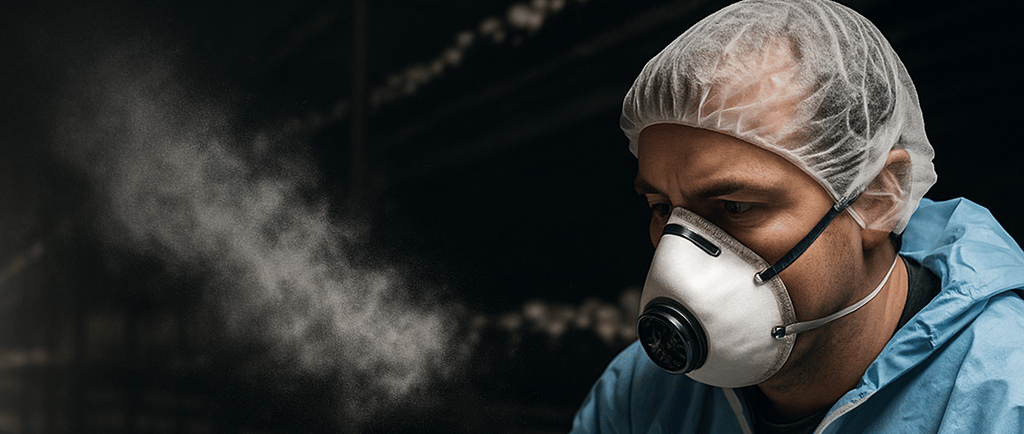Mushroom Workers' Lung: The Hidden Risk for Growers and How to Prevent It
If you grow mushrooms at home or on a farm, you could be at risk for Mushroom Workers' Lung — a serious respiratory condition caused by repeated spore exposure. Learn the symptoms, prevention tips, and the best mask to protect your lungs. A must-read for all mushroom cultivators!
GROWING
8/3/20252 min read


Mushroom Workers' Lung: What Growers Need to Know
Growing mushrooms is a rewarding and increasingly popular hobby, side hustle, or full-time job. But while you're focused on spore prints, fruiting conditions, and substrate prep, there’s an often overlooked risk that can seriously impact your health: Mushroom Workers’ Lung.
What Is Mushroom Workers’ Lung?
Mushroom Workers' Lung is a type of hypersensitivity pneumonitis (HP) — an inflammatory response in the lungs triggered by repeated inhalation of airborne organic particles, particularly mushroom spores. Over time, continuous exposure can lead to chronic respiratory issues and permanent lung damage.
While it’s more common in large-scale commercial farms, small growers and home cultivators are not immune — especially if working in tight spaces without proper ventilation or respiratory protection.
Common Symptoms
Chronic cough
Shortness of breath
Fatigue
Chest tightness
Flu-like symptoms after working with mushrooms
Symptoms may start mild but can worsen over time, particularly if exposure continues without intervention.
Why Does This Happen?
During fruiting, certain mushrooms — particularly spore-heavy varieties like oyster mushrooms — release millions of microscopic spores into the air. In enclosed grow rooms or tents, these spores can accumulate and be inhaled deeply into the lungs. Even if you're not allergic, repeated exposure can sensitize your immune system, triggering inflammation and breathing problems.
How to Protect Yourself
1. Wear a Proper Respirator
A basic dust mask won’t cut it. You need a NIOSH-rated respirator like the 3M 6200 with P100 filters or similar models that block microscopic spores and dust.
👉 3M Reusable Respirator with P100 Filters on Amazon
Disclosure: As an Amazon Associate I earn from qualifying purchases.
This means if you click and buy, I may earn a small commission at no extra cost to you.
2. Control Ventilation
Set up exhaust fans, grow tents with filtered air exchange, and avoid working in completely enclosed spaces. If possible, open a window and use a box fan pointed outside to clear spores.
3. Limit Exposure Time
Avoid spending long periods in fruiting rooms, especially when mushrooms are dropping spores. Monitor grow conditions remotely when possible.
4. Harvest Early
Some growers harvest mushrooms just before full spore drop to reduce exposure. It may slightly lower yield but protects your health.
5. Clean Regularly
Wipe down surfaces, remove old substrate, and sterilize your space between flushes to keep spores and contaminants low.
Conclusion
Mushroom Workers’ Lung is very real, and often ignored in the DIY growing community. But with a few precautions — especially a good mask and ventilation — you can protect your lungs and keep enjoying your grow journey for years to come.
Don’t wait for symptoms to show up. Start protecting your lungs today.
Stay safe, grow smart. For more mushroom growing tips, prepping strategies, and mycology content, stick around and check out more posts here on the blog.
Cultivation
Helping you master gourmet mushroom cultivation — on or off the grid.
© 2024. All rights reserved.
